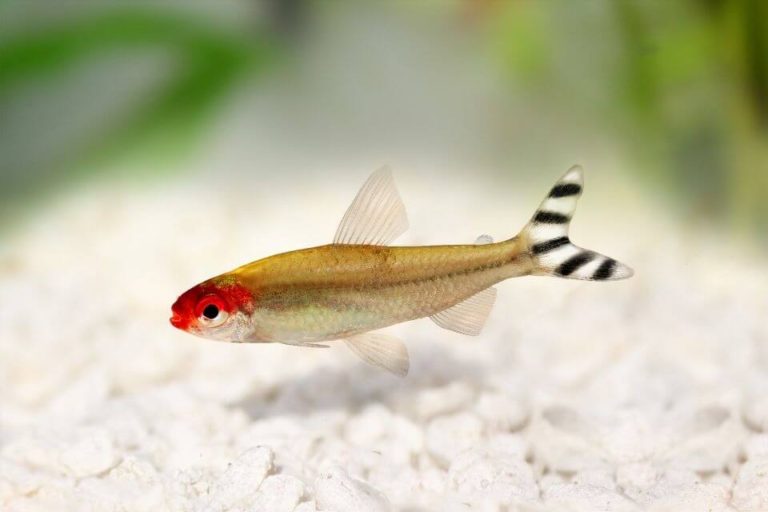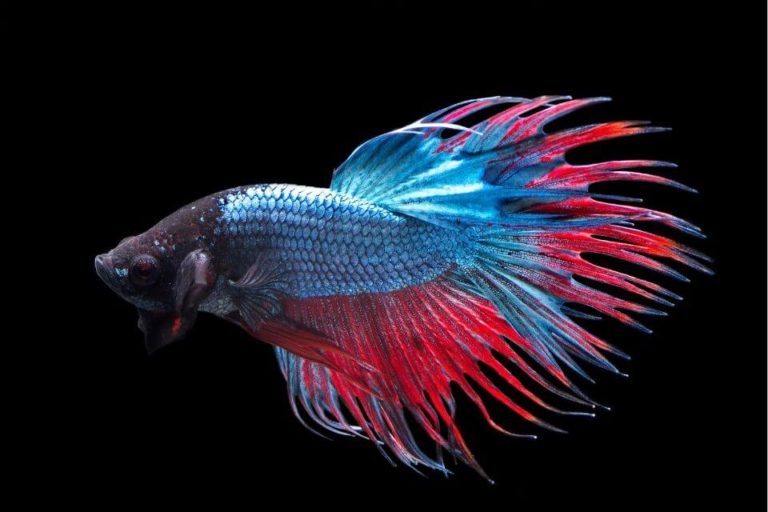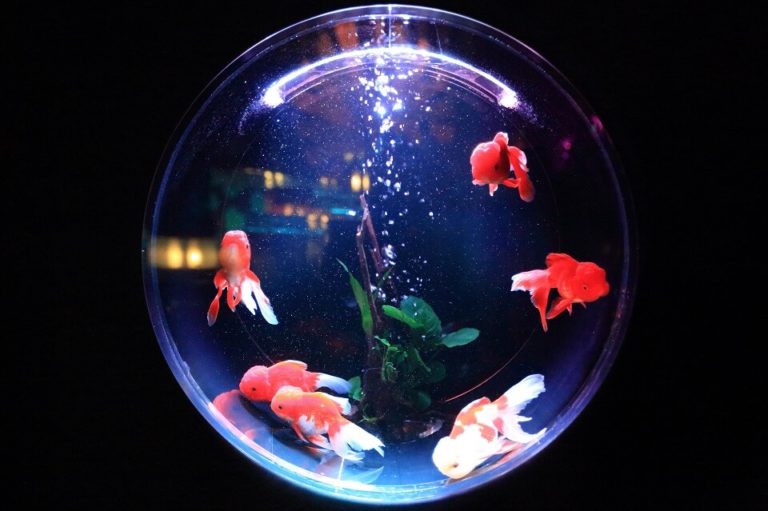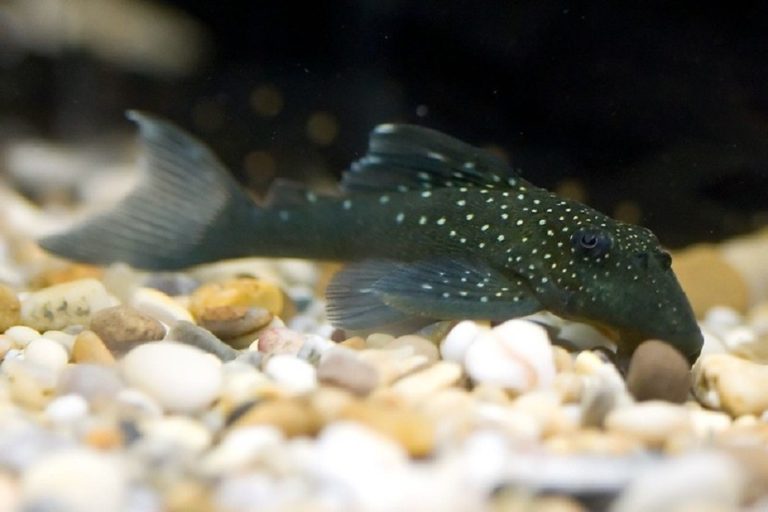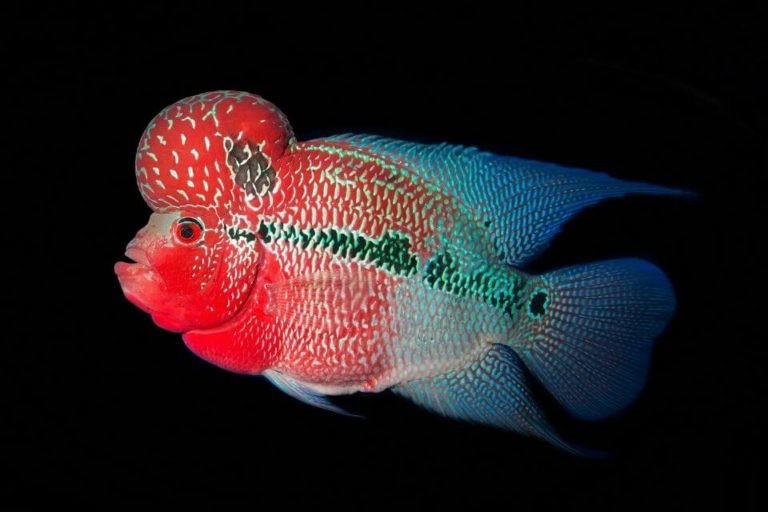Vampire Crab Care Guide: Colorful and Mysterious Freshwater Crab
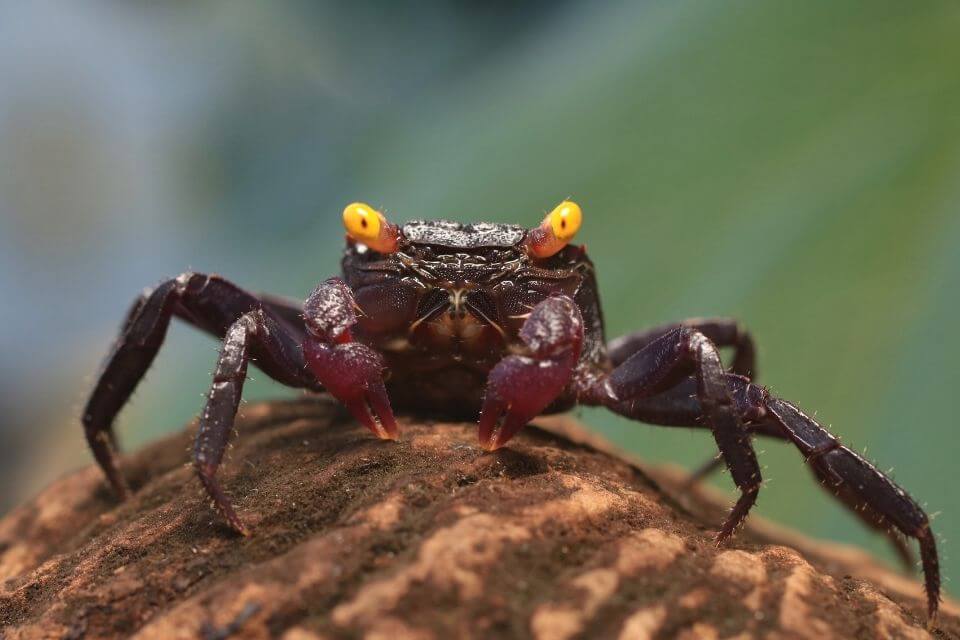
Colorful, mysterious, and small, the Vampire Crab is one of the most unique creatures that any aquarist can add to a freshwater tank. They can be a unique addition to your tank as long as you understand some of their more specific care needs.
If you are considering adding these cool crustaceans to your tank, there are several things you should prepare for first.
This guide will show you everything you need to know before getting some Vampire Crabs of your own. From dietary needs to the perfect tank setup specifications, you’ll learn what is required to give your Vampire Crabs a healthy and vibrant life.
| Quick Facts: | |
|---|---|
| Common Names | : Vampire Crab |
| Scientific Name | : Geosesarma dennerlef |
| Family | : Sesarmidae |
| Origin | : Java Island, Indonesia |
| Care Level | : Easy |
| Lifespan | : Upto 2 years |
| Size (average) | : 1.5 - 2 inches |
| Diet | : Omnivorous |
| Breeding | : Egglayer |
| Social | : Semi-territorial |
| Temperament | : Semi-aggressive |
| Minimum Tank Size | : 10 gallons |
| Temperature | : 70 – 82 °F (21 – 28 °C) |
| Water Hardness | : 0 - 10 dKH |
| Water pH Level | : 7.5 - 8 |
Overview of Vampire Crab
Scientifically called Geosesarma dennerlef are from Sesarmidae family. Vampire Crabs are very interesting creatures with an elusive history that makes it hard to track their origins.
As a fairly recent discovery, Vampire Crabs have quickly become one of the most popular freshwater crustaceans among fish enthusiasts.
One of the most important facts to learn about the Vampire Crab is that they live both on land and in the water. This is good to keep in mind when setting up the perfect tank conditions for these little crawlers.
If you are looking for a more exotic addition to your tank, you might find these interesting crabs to be the perfect thing to add some diversity to your aquatic life.
They are usually considered to be a good type of crab for beginners to care for as they are quite easy to manage. There are just a few specifics to be aware of.
Origin, Distribution, and Availability
Some people are afraid of Vampire Crabs because of their name; contrary to popular belief, Vampire Crabs are not named that way because of how they eat. They are named both for the color of their eyes and the elusiveness of their discovery.
Vampire Crabs originate in the wild in Java Island, Indonesia. Also, they can be found anywhere between Southeast Asia and Hawaii. Their origin has not always been clear; in fact, one of the biggest draws of the Vampire Crab is that its origin was unknown until very recently.
It wasn’t until 2006 that experts discovered where Vampire Crabs actually come from.
These little crabs have been kept as pets for years, and are widely distributed around the world. They may not be as widely available as most freshwater fish, but they can be found through a number of suppliers both locally and online.
Because of how newly discovered they are, Vampire Crabs have a lot of misinformation posted about them. It’s important to be careful when setting up the perfect habitat for these versatile creatures as improper instruction can lead to a lack of care.
Keep reading to learn how you can create an appropriate setup for your crabs.
Vampire Crab Typical Behavior
Like most species of crabs, Vampire Crabs are semi-terrestrial. This means that they spend some of their time on land and some of their time in the water. This is a critical part of their care that you must take into consideration when setting up their tank.
Vampire Crabs like to find a dry spot on land or on a rock where they can rest for hours at a time.
Unlike their namesake, Vampire Crabs do not suck blood from their prey. But like vampires, they are mostly active at night. Their hard exoskeleton protects them from enemies, but it does not grow with the rest of the crab, causing them to molt from time to time.
When they are young, Vampire Crabs molt monthly. As they age, the process starts to slow down. It is important to get rid of the old exoskeleton from the environment after it has been shed. Do not touch the crab until it is done growing its new shell.
Vampire Crabs are usually peaceful among members of their own species. They do tend to be aggressive towards small fish and other crab species, however. Creatures that are smaller than Vampire Crabs are at risk of being attacked and eaten by them.
The pincers they wield are small, so there is no chance that a human can be hurt by a Vampire Crab.
Characteristics of Vampire Crab
Vampire Crabs are a unique species of crab with several distinctions that set them apart from other members of their species.
These special characteristics are the exact reasons why aquarists all over the world of all experience levels want to get their hands on some of these exciting aquatic animals.
Appearance, Colors, and Special Markings

Vampire Crabs light up any aquarium you put them in. They sport a dark-colored body and stalky yellow eyes, which are the main reason for their namesake. They have ten legs, which is quite unique for a crab.
Vampire Crabs share many characteristics with other small crab species that make them easy to take care of in any tank that is already equipped for semi-terrestrial care.
Vampire Crabs usually have deep purple to dark black color hues around their body, with white spots dotted along the carapace. This gives them the appearance of a night sky, adding to their mysterious nature.
The bright yellow eyes sit upon tall stalks and hover over the rest of their body, adding a touch of vibrance to their bodies. They sport two sizable pincers in front of them that are used to catch their food and defend themselves.
Size of Vampire Crab
Vampire Crabs are some of the smallest crabs that you can own in your aquarium. When they are fully grown, they only reach about 2 inches long, including their legs. Their carapace usually grows to be about an inch long.
Lifespan
A healthy and active Vampire Crab typically lives to be two years old. Because of their size, they are not expected to live very long.
You can still ensure that your crabs live a long and healthy life by putting them in great tank conditions and feeding them a well-rounded diet.
Aquarium Care and Conditions for Vampire Crab
In the wild, Vampire Crabs make their homes in rivers and murky lakes. They live on the shore, meaning that they go between land and water quite frequently. It is important to set up space where they will find plenty of room to hide out or take a break from being in the water.
If you want to give your crabs the best of care, it is important that you get the tank and water conditions just right.
Tank Conditions and Care
There must be some land space available in the tank for your crabs to rest on; they cannot live completely underwater. The ideal ratio of land to water would be 80:20. In fact, there should be more land than there is water!
This could limit the number of other creatures and fish that you can keep in a tank with your Vampire Crabs. However, it is still possible to create an ecosystem with several species thriving in this kind of environment at once.
While there is not a lot of water in the tank, it is important that it is maintained strictly. Even the slightest change in water conditions could make Vampire Crabs sick. These sensitive creatures need a good balance of healthy water and dry land in order to live comfortably.
Vampire Crab Tank Size
Vampire Crabs are small and can therefore inhabit smaller-sized tanks. It is recommended that you choose a tank that is at least 10 gallons in size, but you should invest in a bigger aquarium if you plan on housing multiple crabs at once.
You can easily keep a small group of six crabs together in a small 10 gallons tank.
How Do You Set Up A Vampire Crab Tank?

Vampire Crabs need lots of places to find shelter. When setting up a tank for these crabs, make sure to set up a Paludarium tank and add plenty of rocks and live plants that they can hide under.
They will not typically eat plants unless they eat the dead parts of plants that have fallen to the ground.
Make sure to add rocks and driftwood for more places to hide in. Appropriate substrate for your Vampire Crabs would include sand, pebbles, and other debris. It is suggested to keep a humidifier nearby to maintain warmer temperatures.
As long as you can imitate the Vampire Crab’s natural habitat, your crabs will live a good life. Give them some places to swim and some rocks to perch on and they’ll be happy!
Suitable Plants
Any edible subterranean plant would work well for your Vampire Crabs. They do not typically eat plants until they are dead and fallen to bits. In this case, it is important that the plants you add both to water and land are non-toxic.
Some suitable plants for this kind of tank setup may include:
- Cryptocoryne
- Leafy-green vegetables
- Anubias
Floating plants may also suffice, as the natural habitat of these crabs is full of plant life.
Water Conditions and Parameters
Keeping the water conditions stable is perhaps the most important aspect of caring for sensitive animals like Vampire Crabs.
They are very responsive to poor conditions and will become sick if the below parameters are not met. This is why you need to change out 40% of your aquarium’s water every month.
Here are some other specifications to keep in mind:
– Water Temperature
You always want your water temperature to range between 70°F and 82°F. An average temperature in the middle is perfect for these little crabs. Extreme temperature changes could cause them to become sick or get stuck on land.
– Water pH Levels
The water for your Vampire Crabs should be slightly acidic. In the waters of India and Southeast Asia, the average pH levels run between 7.5 and 8. Something a little above neutral will work perfectly for the crabs.
– Water Hardness
The aquarium should maintain a water hardness level of 0 to 10 dKH. This is quite a sizable range, allowing you a little bit of leeway in this area.
However, keeping it at a steady hardness level would be in the best interests of the health of your crabs and the other creatures living in the same aquarium.
– Do Vampire Crabs Need Brackish Water?
Vampire Crabs are only freshwater creatures, and cannot live in brackish water. Unlike other similar species, these crabs do not have a marine larval stage – this means that they live and reproduce in freshwater.
It is important that these crabs live in a Paludarium tank, which provides mostly land for them to rest on. The water that is included in the tank must be completely freshwater that is warm and alkali to mimic the wild waters of the tropics.
Diet and Feeding for Vampire Crab
A balanced and well-rounded diet is one of the most essential components of keeping your Vampire Crabs healthy for the duration of their lives. In order for them to grow and thrive, they need to eat a lot of different foods.
As omnivores, Vampire Crabs will eat just about anything. They require a diet that is rich both in meat and vegetable matter. They are natural scavengers in the wild, eating whatever living thing comes their way. There are, of course, some things that are healthier than others.
Their main diet should consist of:
- Crickets
- Brine shrimp
- Bloodworms
- Earthworms
- Flakes, pellets, or wafers premade for crabs
- Dried fish
You should also be sure to supplement their diet a few times a week with:
- Green vegetables
- Live food (worms or fish)
A combination of animal and plant matter can sustain your growing Vampire Crabs and give them the protein and calcium they need to grow strong exoskeletons as they get older.

Common Diseases of Vampire Crab
Thankfully, Vampire Crabs are not susceptible to some of the more common freshwater fish ailments like Ich. But while they cannot be affected by these kinds of diseases, they can still transmit them, so it’s important to maintain their health for the sake of the entire tank.
There are no particular conditions or diseases to be aware of. Keep your eye on the buildup of pollutants in the smaller tanks, as this is the leading cause of illness and death among Vampire Crabs at home.
Be on the lookout for:
Copper Poisoning
Copper is toxic to invertebrates and could kill anything that is living in your tank. Crabs are especially susceptible to copper poisoning – both on land and in the water. Clean your tank water often, but do not use chemicals that contain this harmful element.
Bacterial and Fungal Infections
If the water conditions in the tank or poor, it could cause a buildup of harmful bacteria or algae in the aquarium. This will make all of your fish sick, including your Vampire Crabs, who could suffer from an infection.
Due to their small size, it can be difficult to take care of these crabs once they become infected.
Gender Differences of Vampire Crab
There are a few noticeable differences between female and male Vampire Crabs. Most expert aquarists can easily spot some distinctions just by looking at them.
Male Vampire Crabs are a little larger than females and they usually have lighter-colored claws. In fact, some males can sport bright orange or red claws as opposed to the black claws that most females have.
On the underside of the crab is an abdominal flap. The male has a pointed flap, whereas females have wider, more rounded flaps. Females can also be seen carrying around fertilized eggs before they are laid.
Vampire Crabs Breeding
It is very difficult to breed Vampire Crabs in your home aquarium, especially if you are untrained. This is mostly because there is still so much that is unknown about the breeding process and what conditions are best for them during this time.
There are a few things that are known:
- These crabs are eligible for breeding after they grow to be six months old.
- The male will climb on top of the female to fertilize eggs when they are ready to mate.
- The female will carry between 20-80 fertilized eggs at a time.
- It will take about a month for the eggs to hatch.
- Baby crabs are fully formed when they are born and can be independent as soon as they emerge from the egg.
If you plan on letting Vampire Crabs breed in your tank, you should keep them safe from other creatures. Babies are incredibly small but can fend for themselves, and they will likely need plenty of hiding spaces to rest in while they grow.
How Many Vampire Crabs Should I Keep Together?
You have to keep a decent ratio of two females per male if you are planning on keeping a group of Vampire Crabs together. This will stem the aggression and keep peace throughout the tank.
Depending on the size of the tank, you can keep up to six crabs together at a time. Larger tanks allow for bigger groups of crabs – but make sure they are not overly crowded with each other.
Crabs can be a bit territorial and they love having their own places to hide.
Tank Mates: What Can Live With Vampire Crabs?
It is essential that you maintain a peaceful and well-balanced community within your aquarium. Because of that, certain creatures will work better as tank mates than others.
If you are looking to add some fish or perhaps another crustacean, take a look at this list first. Make sure that the creatures you add are around the same size as the Vampire Crabs in order to avoid aggression.
Some good tank mates include:
- Neon tetras
- Danios
- Cherry barbs
- Guppies
- Large snails
- Shrimp
It might be a good idea to consult your fishkeeping expert if you are unsure whether a certain species will live peacefully with Vampire Crabs.
You should never keep another species of crab with Vampire Crabs, as this will likely cause a lot of aggression and violence within the tank.
They thrive well with their own kind. You should always consider keeping a small group of Vampire Crabs instead of having one on its own.
Are Vampire Crabs Fully Aquatic?
Vampire Crabs are not fully aquatic; they are semi-terrestrial creatures. This means that they need to live both on land and in the water in order to survive and thrive.
In fact, you may find that they spend most of their time on land than under the water! They need their aquarium to have about 80% land and 20% water in order for them to thrive.
Do Vampire Crabs Need Land?
Vampire Crabs require a lot of land in their tank. You cannot add these crabs to a pure-water aquarium; this will kill them. Crabs are always looking for places on land to hide and rest from the movement of the water.
As unique creatures, Vampire Crabs are unlike most other fish and freshwater animals that you might want to add to your tank. You should only consider them if you have enough space in the tank to add ample land.
Why Are Vampire Crabs Called Vampire Crabs?
Vampire Crabs are named that way because of their eyes. They have two glowing yellow eyes that sit atop their dark-colored bodies, reminding one of a vampire.
But their name can be deceiving, as many people are led to believe that Vampire Crabs are mean and prone to biting. They are quite peaceful when they live together with plenty of space to thrive.
Can Vampire Crabs Live With Shrimp?
There are many species of shrimp that can live peacefully with Vampire Crabs. As long as they are not small enough to be attacked or eaten by the crabs, they will survive well in the same habitat.
Shrimp are usually peaceful bottom-dwelling creatures that may not come in much contact with crabs anyway. This makes them the perfect companion for Vampire Crabs in the same tank.
Are Vampire Crabs Aggressive?
Vampire Crabs are usually not aggressive towards each other unless there are too many males in a group and not enough females. For the most part, they survive well with their own kind and do not fight.
They will, however, show aggression towards other creatures their same size. They will try to attack and eath those that are smaller.
Their front pincers are quite small, so it is hard for them to catch the fish they might snap at. As territorial creatures, Vampire Crabs should be given plenty of space to hide on their own so they are not prone to aggression.
Final Thoughts of Keeping a Vampire Crab
Vampire Crabs are very unique and very colorful, and they can be a cool addition to your tank. They are easy to take care of, making them a good choice for beginning aquarists or those who are just looking to keep something different in their tanks.
It takes a bit of setting up to make sure their tank and habitat conditions are just right, but after you learn how to maintain this aquarium or Paludarium, caring for Vampire Crabs should be a breeze.
If you want something that will mesmerize your guests and contribute to a diverse and thriving community in your aquarium, Vampire Crabs are an excellent choice to start out with.



